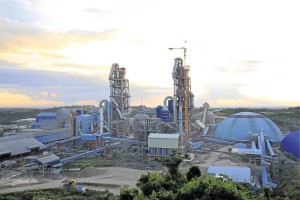Cement-maker Eagle Cement Corp. has seen brisk demand for its P8.62-billion initial public offering (IPO), its underwriters said.
Following Eagle’s investors’ briefing on May 15, IPO joint lead underwriters China Bank Capital Corp., Philippine National Bank Capital and Investment Corp. and SB Capital Investment Corp. reported “encouraging” reception from both institutional and retail investors, citing appreciation for the company’s “production efficiency, strong brand equity, and sound financials.”
“The issue was well-received by institutional and retail investors alike and we are confident that Eagle will keep this momentum as it launches the offer,” SB Capital president Noel Dayrit said in a press statement on Thursday.
“The investors’ warm response is a strong indication of confidence in Eagle’s fundamentals and potential to be the major driver of the Philippine cement industry,” Dayrit added.
Eagle priced the IPO at P15 per share. It will sell 500 million common shares by way of primary offer with an overallotment option of up to 75 million secondary shares.
The offer period ends on May 22. To be traded under the ticker symbol “EAGLE”, the company targets to be listed on the main board of the Philippine Stock Exchange on May 29.
Eagle is now the fourth biggest cement-maker in the country after the three large multinational players Lafarge Holcim, Republic (CRH/Aboitiz) and Cemex. Its current capacity stands at 5.1 million metric tons of cement per annum and will increase to 7.1 million metric tons in 2018, once the third production line in its Bulacan plant is complete.
Based on 2014 figures, Philippine cement per capita consumption was only 212 kilos, nearly the bottom-dweller in Southeast Asia, beating only Myanmar which consumed 152 kilos of cement per capita. Even Vietnam, Laos and Cambodia had higher per capita consumption of 524, 435 and 241 kilos, respectively.
Proceeds of the IPO will be used to partially finance Eagle’s Cebu plant, which will house its fourth production line and add two million MT to its annual capacity. The plant is expected to help establish its foothold in the Visayas and Mindanao, together with the construction of several marine terminals.
